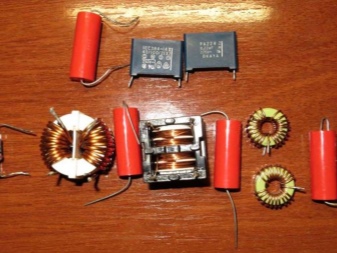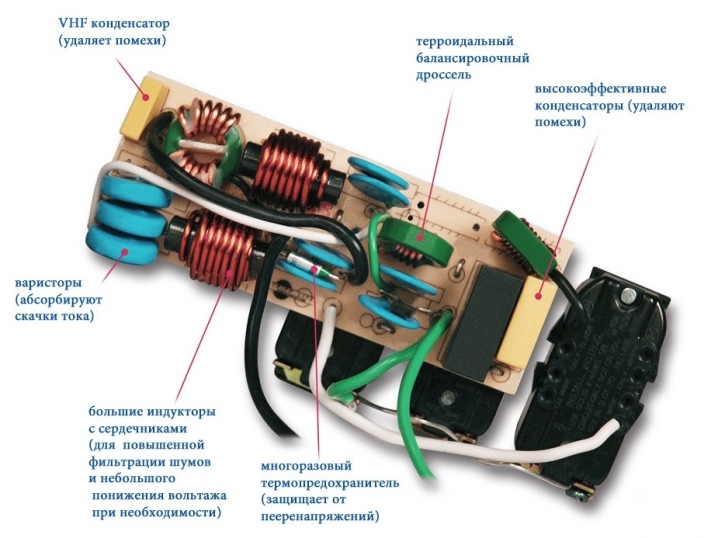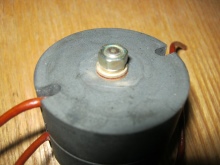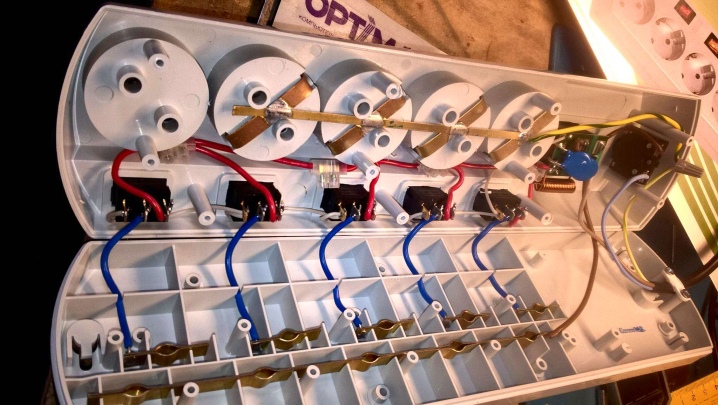Making a power filter with your own hands

Today, almost every home has an object that most of us simply call an extension cord. Although its correct name sounds like network filter... This item allows us to connect various kinds of equipment to the power outlet, which for some reason we cannot move closer to the source of electricity, and the native cable of the device is simply not enough in length. In this article we will try to figure out how to make a simple power filter with your own hands.


Device
If we talk about the device of such a thing as a surge protector, then it should be said that it can belong to one of 2 categories:
- stationary multichannel;
- built-in.
In general, the circuit of a conventional mains filter, designed for a voltage of 220 V, will be standard and, depending on the type of device, may only slightly differ.


If we talk about built-in models, then their feature is that the contact plates of such filters will be part of the internal structure of electronic equipment.
Other equipment also has such boards, which belongs to the category of complex ones. Such boards usually consist of the following components:
- additional capacitors;
- induction coils;
- toroidal choke;
- varistor;
- thermal fuse;
- VHF capacitor.

Varistor is a resistor that has variable resistance. If the standard voltage threshold of 280 volts is exceeded, then its resistance decreases. Moreover, it may decrease by more than a dozen times. A varistor is essentially a surge protector. And stationary models usually differ in that they have several outlets. Thanks to this, it becomes possible to connect several models of electrical equipment to the electrical network through a surge protector.

In addition, all surge protectors are equipped with LC filters. Such solutions are used for audio equipment. That is, such a filter is interference suppressing, which will be extremely important for audio and work with it. Also, surge protectors are sometimes equipped with thermal fuses to prevent voltage surges. Disposable fuses are sometimes used in some models.

How to do it?
To make the surge protector as simple as possible, you will need to have the most common carrier for several outlets with a power cord... The product is made very simply. To do this, you will need to open the case of the extension cord, and then solder the resistance of the required value, depending on the model of the extension cord and the inductor. After that, both branches must be connected with a capacitor and resistance. And between the sockets a special capacitor must be installed - mains. This element, by the way, is optional.

It is installed in the device body only when there is enough space for this.
You can also make a model of a line filter with a choke from a pair of windings. Such a device will be used for equipment with high sensitivity. For example, for audio equipment, which reacts quite strongly to even the slightest interference in the electrical network. As a result, the speakers produce sound with distortion, as well as extraneous background noise. A surge protector of this type makes it possible to solve this problem. It would be better to assemble the device in a convenient case on a printed circuit board. It runs like this:
- for winding the choke, a ferrite ring of the NM grade should be used, the permeability of which is in the range of 400-3000;
- now its core should be insulated with a cloth, and then varnished;
- for the winding, a PEV cable should be used, the diameter of which will depend on the load power; for a start, a cable option in the range of 0.25 - 0.35 millimeters is suitable;
- the winding should be carried out simultaneously with 2 cables in different directions, each coil will consist of 12 turns;
- when creating such a filter, containers should be used whose operating voltage is somewhere around 400 volts.



It should be added here that the choke windings are connected in series, which leads to the mutual absorption of magnetic fields.
When the RF current passes through the inductor, its resistance increases, and thanks to the capacitors, unwanted impulses are absorbed and short-circuited. Now remains install the printed circuit board into a metal case... If you decide to use a case made of plastic, you will need to insert metal plates into it, which will make it possible to avoid unnecessary interference.

You can also make a special surge protector for powering radio equipment. Such models are needed for equipment that has switching power supplies, which are extremely sensitive to the occurrence of various kinds of phenomena in the power grid. For example, such equipment can be damaged if lightning strikes the 0.4 kV power grid. In this case, the circuit will be almost standard, just the level of suppression of network noise will be higher. Here the power lines will have to be made of copper wire with PVC insulation with a cross section of 1 square millimeter.

In this case, conventional MLT resistors can be used. Special capacitors must also be used here.
One should be rated for a DC voltage with a capacity of 3 kilovolts and have a capacity of about 0.01 μF, and the second with the same capacity, but rated for a voltage of 250 V AC. There will also be a 2-winding choke, which should be made on a ferrite core with a permeability of 600 and a diameter of 8 millimeters and a length of about 7 centimeters. Each winding must have 12 turns, and the rest of the chokes must be made on armored cores, each of which will have 30 turns of cable... A 910 V varistor can be used as an arrester.



Precautionary measures
If we talk about precautions, then first you should remember that a homemade surge protector that you want to assemble from the available parts is a rather complex technical device. And without knowledge in the field of electronics, and quite extensive, it is simply impossible to make it right. Besides, all work on the creation or modification of an existing device must be carried out exclusively in compliance with all safety measures... Otherwise, there is a high risk of electric shock, which can be not only dangerous, but also fatal.
It should be remembered here that the capacitors used to create network filters are designed for a fairly high voltage.

This allows them to accumulate residual charge. For this reason, a person can get an electric shock even after the device has been completely disconnected from the electrical network. Therefore, when working there must be a parallel connected resistance... Another important point is that before working with the soldering iron, you should make sure that all the elements of the power filter are in good condition. To do this, use tester, who need to measure the main characteristics and compare them with the values that are declared.

The last important point, about which it will not be superfluous to say, is that Cables should not be crossed, especially in areas where the potential for heating can be very high. For example, we are talking about bare contacts, as well as line filter resistors. And it will not be superfluous to make sure before connecting the device to the network that there will be no short circuits. This can be done by dialing a tester. As you can see, it is possible to make a surge protector with your own hands. But for this you should clearly know what actions you are carrying out and have certain knowledge in the field of electronics.

How to build a surge protector into a regular carrier, see below.













The comment was sent successfully.